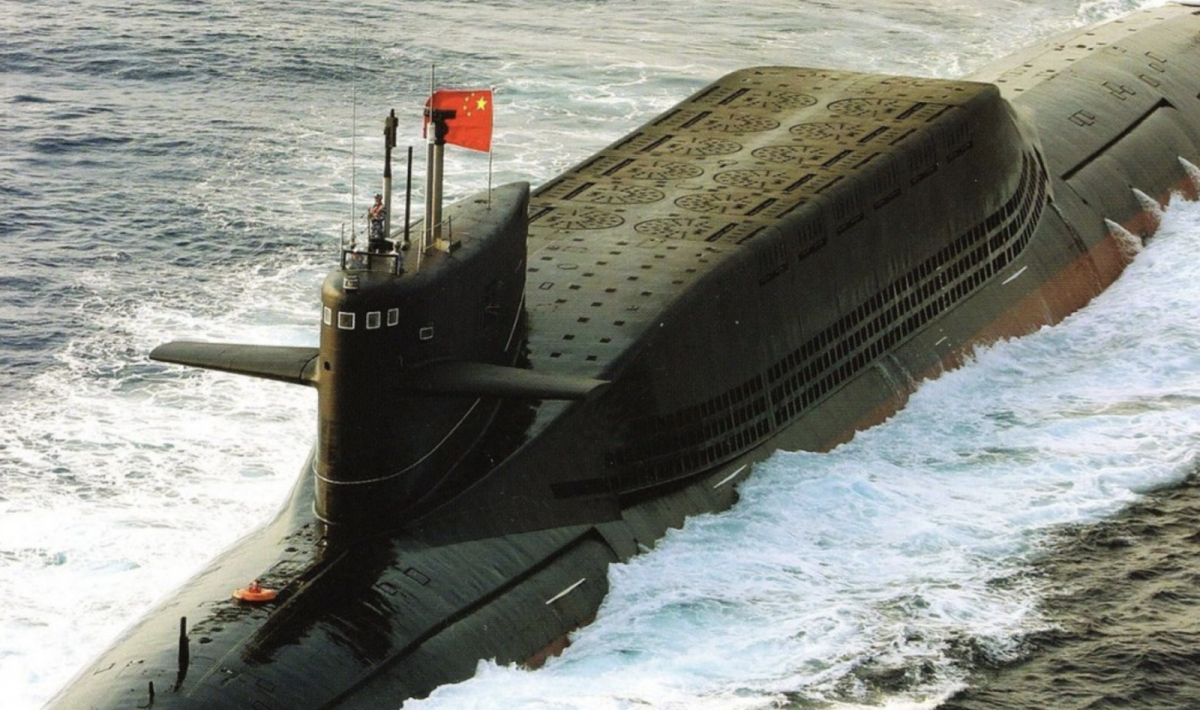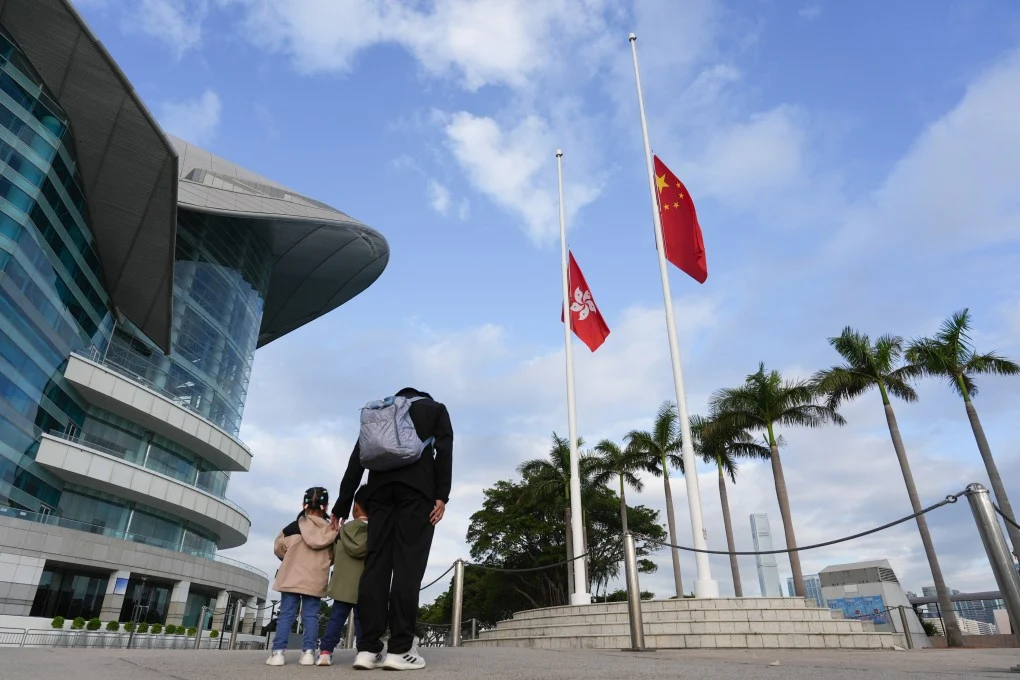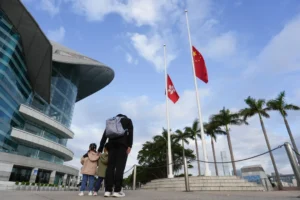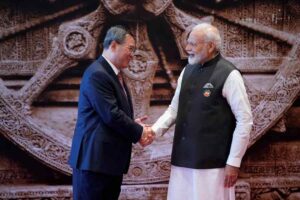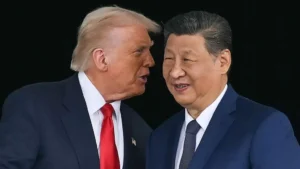Submarines: the soft underbelly of PLA-N
The accidental sinking of a Chinese nuclear submarine while under construction has exposed the soft underbelly of the submarine arm of the Chinese navy. Recurring accidents involving Chinese subs point to their technical shortcomings. The cloak of denial and secrecy in which Beijing tries to wrap these incidents is now unable to hide the truth.
The submarine under construction sank most likely sometime between May and June this year at the Shuangliu shipyard in Wuhan. The Chinese authorities had kept the news under the wraps but it has been revealed after analysis of satellite imagery data collected by the U. S. Defense Department. It was the latest Zhou-class nuclear submarine under construction and its sinking is a substantial loss for the Chinese navy, experts say.
An AP report says former U.S. Navy submarine officer and now analyst at the Centre for a New American Security Thomas Shugart was the first to notice the incident involving the submarine in July.
Satellite images showed what appeared to be a submarine docked at the shipyard. An image taken on June 15 appeared to show the submarine either fully or partially submerged under the surface of the river, with rescue equipment and cranes surrounding it. Booms were trying to prevent any oil or other leaks from the vessel. A satellite image taken on August 25 showed the submarine back at the same dock where the submerged vessel had been. It is still not clear if the submarine that had sunk had been loaded with nuclear fuel or if the reactor was operating at the time of the accident.
The Chinese authorities keep accidents involving their subs well under the wraps. This was the reason the Observer Research Foundation had headlined a report on another accident involving a Chinese submarine that was far more serious than the recent one as “The curious case of the PLAN 093-147,” PLAN standing for People’s Liberation Army – Navy.
The Shang-class submarine sank in the Yellow Sea on August 21 last year, killing all 55 crew members on board. Among them were 22 officers, seven officer cadets, nine petty officers and 17 sailors. They suffocated to death. The details are sketchy as China is yet to even acknowledge the accident.
There were conflicting reports about the cause of the accident; quite natural because of the attempts by the Chinese authorities to hide it. Reports in some British media said the submarine had been snared by its own chain and anchor trap that had been laid out to catch Western vessels lurking off China’s coast in the Yellow Sea. The accident caused the oxygen generating system of the submarine to fail; raising questions on the efficacy of oxygen generating systems on board Chinese submarines. The crew members had tried to repair the system but finally died of asphyxia.
Later, the Taiwanese media reported that the real cause of the accident was serious problems with torpedoes on board the submarine which was on a mission to conduct underwater weapon tests. A torpedo exploded in the launch tube, killing all the crew members on board. According to the Observer Research Foundation report, the Liaoning Maritime Safety Administration had issued repeated warnings for the area where the disaster happened from August 20 to October 8, “a possible indication of an accident in the region.”
According to this report, an investigation launched by the Central Military Commission of China concluded that there was a serious problem with the fire control design of the torpedo. Allegations of procurement fraud and corruption not only in the submarine force but also at much higher levels were probed. Significantly, then Defence Minister of China Li Shangfu had gone missing from public view since August 2023. He was removed from his position as Defence Minister in October 2023 and expelled from the Chinese Communist Party in June 2024.
The Chinese authorities have not offered any explanation for the fate of Li Shangfu. “Li is being investigated for responsibilities in the armament procurement, including for the submarine force,” Shen Ming-Shih of the Institute for National Defense and Security Research in Taiwan was quoted in Radio Free Asia.
The news that even the iron-fisted Chinese authorities could not hide was the accident in 2003 in a diesel-electric submarine that went down with 70 sailors on board. All that was known about the reason for the disaster was that there was a mechanical problem on board the submarine.
The ORF report has been succinct in its assessment of the malady facing the submarine arm of the Chinese navy. “The PLAN knows it has work to do; at least in the area of underwater warfare, where the gap with the U.S. Navy is significant,” it says. “The Type 93s are counted among China’s most advanced and quietest subs.” Such a disaster “erodes the PLAN’s credibility as a power projection force. China’s naval leadership has long known the importance of shoring up the undersea deficit. But it has never quite succeeded in ironing out the defects on its nuclear attack submarines.”
The Strategist, an Australian publication on strategic affairs, has rejected the opinion that the latest nuclear attack submarines of China are quieter than the U.S. Virginia class submarines. “The U.S. still dominates war under the seas,” it says. “China’s strategic nuclear submarines do not provide Beijing with an assured second strike force because they are very vulnerable to U.S. attack submarines.” According to a U.S. War College publication in September 2023 “China’s submarine industrial base continues to suffer from surprising weaknesses in propulsion and submarine quieting.”
A major weakness of the PLAN, be it submarine or at the surface, is that ports far from the Chinese shores they have access to do not have skilled shipyard workers and modern facilities to maintain its fleet. “China can only dream of access to the host nation’s workforce and facilities at places such as Yokosuka in Japan and Diego Garcia in the Indian Ocean that the U. S. enjoys,” they say. The U.S. has established a tremendous lead in having bases and maintenance facilities and in developing dependable alliances since World War II.
